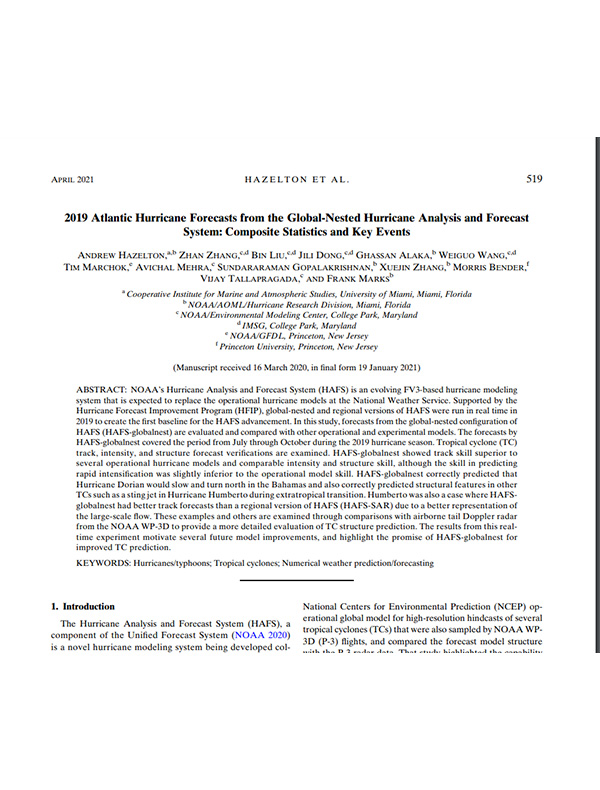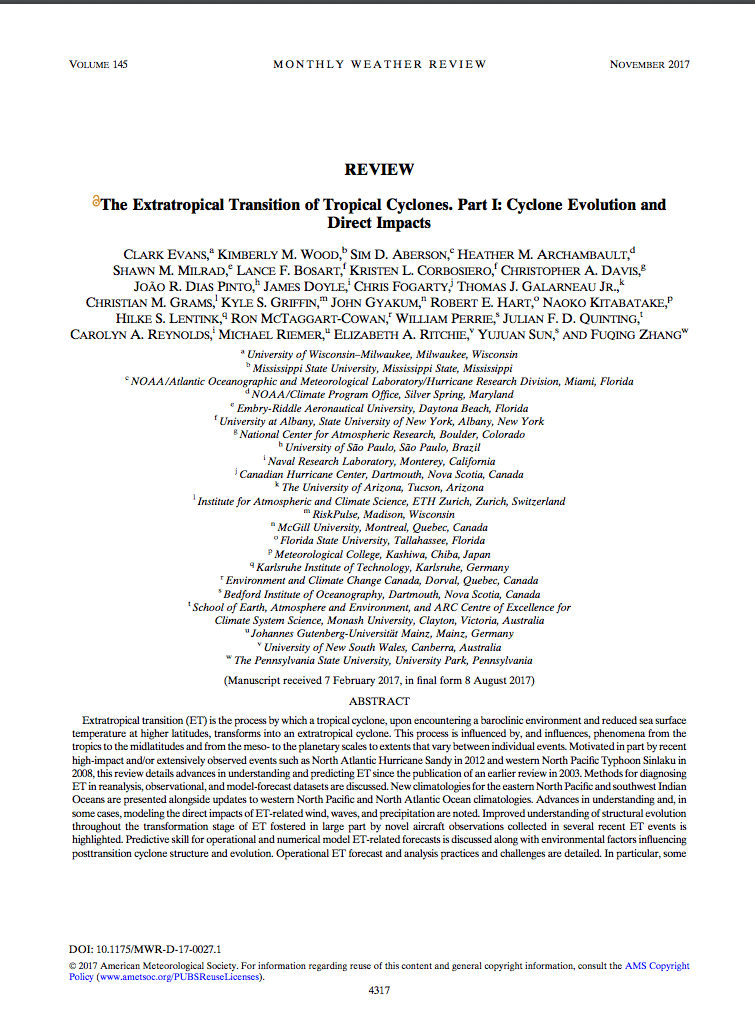2019 Atlantic Hurricane Forecasts from the Global-Nested Hurricane Analysis and Forecast System: Composite Statistics and Key Events
Hazelton, A., Zhang, Z., Liu, B., Dong, J., Alaka, G., Wang, W., … & Marks, F. (2021). 2019 Atlantic hurricane forecasts from the global-nested hurricane analysis and forecast system: Composite statistics and key events. Weather and Forecasting, 36(2), 519-538.
Abstract: NOAA’s Hurricane Analysis and Forecast System (HAFS) is an evolving FV3-based hurricane modeling system that is expected to replace the operational hurricane models at the National Weather Service. Supported by the Hurricane Forecast Improvement Program (HFIP), global-nested and regional versions of HAFS were run in real time in 2019 to create the first baseline for the HAFS advancement. In this study, forecasts from the global-nested configuration of HAFS (HAFS-global nest) are evaluated and compared with other operational and experimental models. The forecasts by HAFS-global nest covered the period from July through October during the 2019 hurricane season. Tropical cyclone (TC) track, intensity, and structure forecast verifications are examined…



